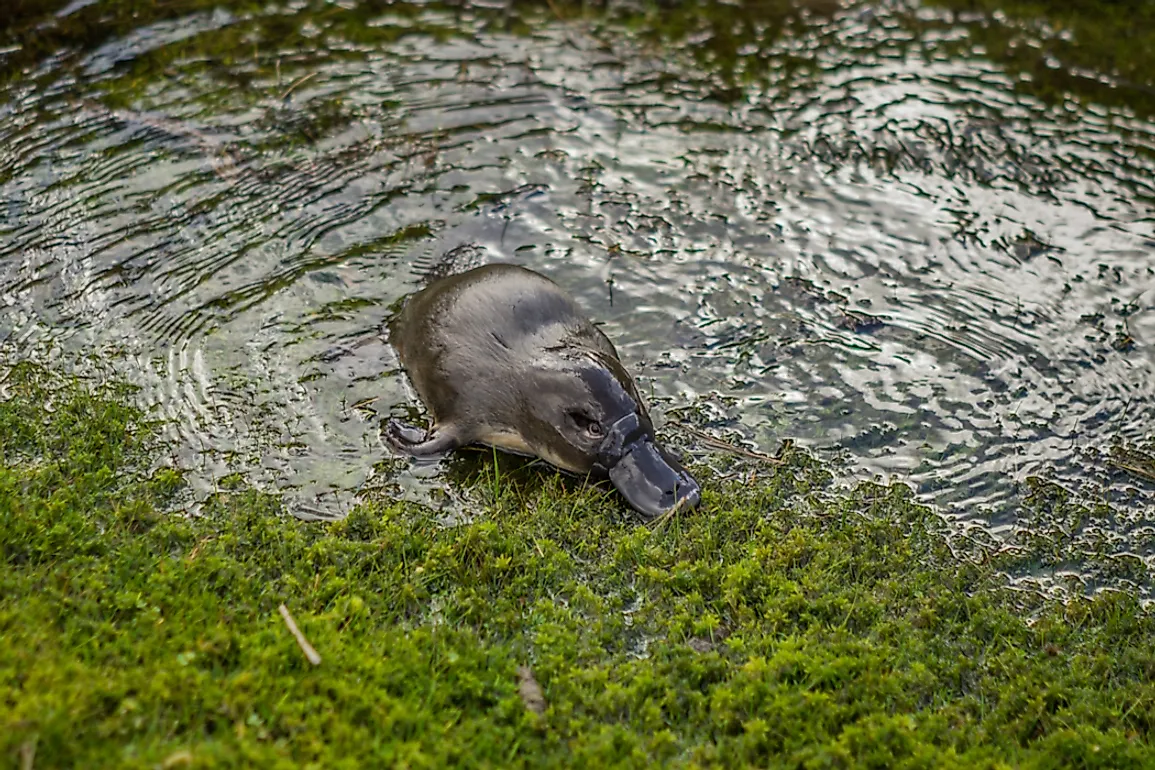Where Do Platypus Live?

The platypus is a semi-aquatic mammal that is indigenous to the eastern parts of Australia, particularly Tasmania. The platypus is one of the few existing monotremes species. It is an egg-laying mammal with a sleek furry body, paddle-shaped tail, webbed feet, and a flat bill. A Platypus is one of the few venomous mammals on earth. The female platypuses are 17 inches long while the male can attain a maximum length of about 20 inches. The weight of the platypus varies from 1.5 pounds to 5.3 pounds with the females being lighter than the male. Platypus feed on insect larvae, freshwater yabby, annelid worms, and freshwater shrimps.
Habitat
Platypuses build their homes in the freshwater regions of the southeastern and eastern Australian coasts and the island of Tasmania. Although they spend most of their time in the water, these creatures swim to the riverbanks and dig tunnels with chambers. These creatures are nocturnal animals that are quite active at night and dusk; therefore they spend their day sleeping in the burrows. Some platypuses reside under debris, roots or rocks. Platypuses are active all year long, and during winter their waterproof fur keeps them warm while their tails store fats for energy. Even though they exist in one corner of the continent, platypuses can survive numerous climate conditions.
Range and Distribution
Their habitat stretches west from the tropical rainforest area of Queensland to the Australian Alps. They also occupy the colder highland regions and the rainforest habitat of Tasmania. Although platypuses reside in a wide variety of habitats, they are primarily found in the freshwater rivers and lakes of the rainforest region of Queensland. Platypus population was introduced on Kangaroo Island in Flinders Chase National Park from 1928 to 1946.
Platypuses reside in the east-flowing river systems and about 80% of all the west-flowing river systems in New South Wales. They are also present in approximately 80% of rivers in Victoria and 33% of Queensland’s river basins. They are also found in the rivers of King Island which is isolated from Tasmania and Victoria by the Bass Strait.
Localized Extinction and Low Populations
Other than the low platypus population in South Australia, these creatures still occupy the same general distribution they did before the European settlements were built in the region. Platypuses no longer live in the wild in the southern parts of the Australian mainland; however, some few species that swim along River Murray find their way into the state. The absence of these species in the western and northern parts of South Australia reflects on the lack of reliable surface water source in this region. Severe flooding and predation by the crocodiles have reduced their population in Northern parts of Australia. Platypuses appear to be extinct in the Mount Lofty and Adelaide hills ranges in South Australia and also in the River Avoca basin.
Are There Any Platypuses Outside Australia?
There were no platypuses living in captivity outside Australia, as of 2017. Three attempts to introduce platypus in Bronx Zoo were made in 1958, 1947, and 1922, but just 2 out of the 3 platypuses introduced in the zoo lived for over one and a half years.











